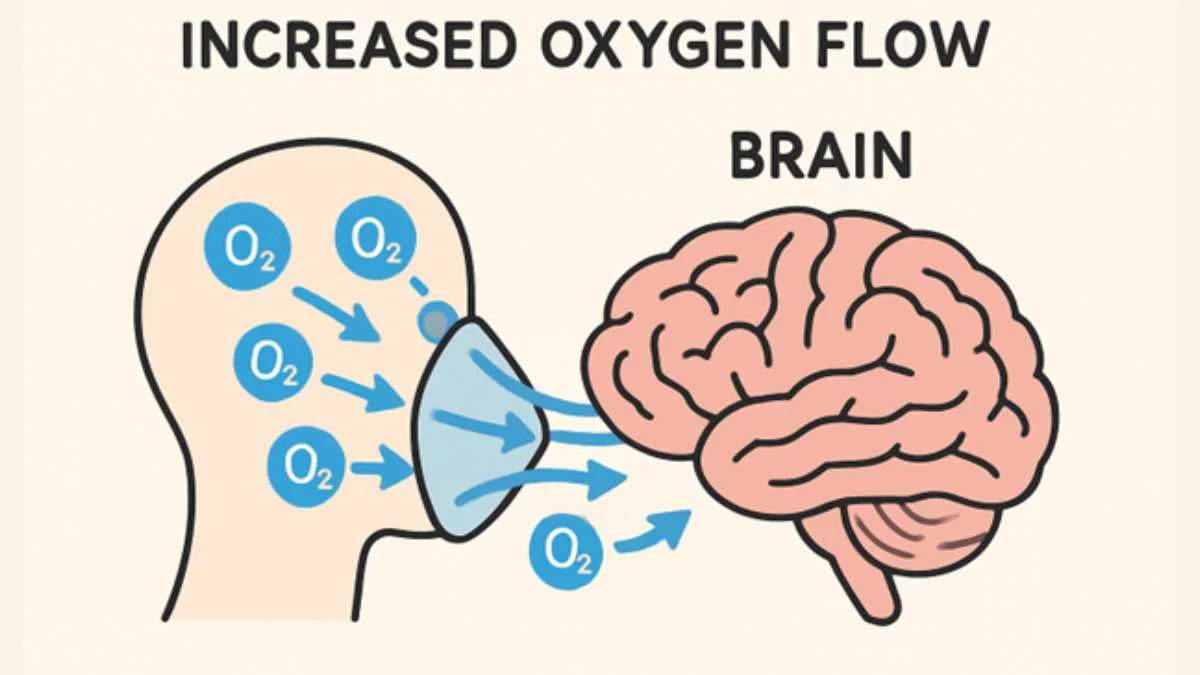HEALTH AND FITNESS
Oxygen and the Brain: How Enhanced Oxygenation Supports Cognitive Recovery

Key Takeaways
- Enhanced oxygenation can improve cognitive functions in individuals recovering from brain injuries and other neurological conditions.
- Hyperbaric oxygen therapy (HBOT) has shown promise in promoting neuroplasticity and reducing neuroinflammation.
- Normobaric oxygen treatment may accelerate motor learning and cognitive rehabilitation.
Oxygen plays a vital role in brain function, fueling neurons and supporting the processes that govern memory, attention, and problem-solving. When the brain experiences trauma or diminished oxygen levels, cognitive performance can decline, leading to issues like brain fog, fatigue, and difficulty concentrating. Enhancing oxygen delivery, particularly after injury or in cases of neurological disorders, is increasingly being studied to support cognitive recovery and promote overall brain health.
Specialized treatment approaches often involve controlled oxygen therapy in clinical settings to help restore healthy brain function. Facilities such as oxygen medical center may utilize these therapies to aid in improving circulation, reducing inflammation, and encouraging neural repair. While research is ongoing, improved oxygenation shows promise in supporting the brain’s natural healing processes and improving the quality of life for individuals facing cognitive challenges.
Table of Contents
The Role of Oxygen in Brain Function
Despite representing just 2% of the body’s mass, the human brain is a voracious consumer of oxygen, using about 20% of the body’s total supply. This unprecedented demand is a testament to the complexity and importance of cerebral functions like memory, executive processing, and attention. Disruptions in oxygen delivery—due to injury, illness, or age—can impair these vital processes, often resulting in problems like confusion, memory loss, slowed thinking, and reduced mental clarity.
Hyperbaric Oxygen Therapy (HBOT)
Hyperbaric Oxygen Therapy (HBOT) involves placing the individual in a pressurized chamber and delivering pure oxygen at levels much higher than those found in ambient air. This elevation dramatically increases oxygen saturation in the blood and, critically, the brain’s tissues. Clinical studies suggest HBOT can facilitate neuroplasticity, the brain’s remarkable ability to reorganize and make new neural pathways after damage such as a traumatic brain injury (TBI).
HBOT in Post-COVID-19 Cognitive Impairment
“Long COVID” has brought attention to a new subset of patients experiencing brain fog, memory lapses, and difficulty concentrating—sometimes months after initial infection. Addressing these cognitive deficits poses a unique challenge, but research has shown hope through HBOT. In a rigorously designed randomized controlled trial, HBOT led to substantial improvements in cognitive symptoms among people enduring post-COVID-19 condition. The treatment was directly linked to enhanced brain perfusion and restored neuroplasticity, suggesting its value extends beyond traditional brain injury and into the emerging realm of post-infectious cognitive disorders.
Normobaric Oxygen Treatment and Motor Learning
While HBOT typically grabs headlines, normobaric oxygen treatment—administering high oxygen levels at regular atmospheric pressure—also shows intriguing promise, particularly in motor skill acquisition and rehabilitation. Surprising results from recent studies show that subjects inhaling 100% oxygen during motor activities learned new skills quickly and with greater accuracy. This enhancement points to a future where cognitive and motor rehabilitation programs customize oxygen delivery to accelerate outcomes.
Mechanisms Behind Oxygen’s Cognitive Benefits
The link between enhanced oxygenation and cognitive improvement operates through several core mechanisms:
- Neuroplasticity: Elevated oxygen delivery encourages the formation and reinforcement of new neural connections, helping the brain recover from an injury or disease.
- Reduction of Neuroinflammation: Chronic neuroinflammation is a known driver of cognitive decline. Oxygen therapy can dampen this inflammation, protecting brain cells from further injury.
- Improved Cerebral Blood Flow: With higher oxygen content in the bloodstream, cerebral circulation improves, ensuring neurons receive the resources needed to function and recover.
Each of these processes is indispensable for repairing and rejuvenating the nervous system after trauma, infection, or degeneration.
Considerations and Future Directions
Adopting oxygen-based therapies should always be under expert guidance, as responses vary by health and intervention timing. Research on dosing, frequency, and combinations aims to personalize treatments and improve outcomes. As validation increases, they may become key in cognitive recovery and neurorehabilitation. Using these therapies in multidisciplinary programs can enhance recovery for those with mental challenges. Overall, interventions that increase brain oxygen—via hyperbaric or normobaric methods—redefine cognitive recovery standards. They will likely become vital for brain health and healing with ongoing progress and careful use.
-

 GENERAL5 months ago
GENERAL5 months agoChristofle – For Those Who Dream of Family Heirloom Silver
-

 SPORTS7 months ago
SPORTS7 months agoDiscover the World of Football with Streameast: Watch Your Favorite Leagues and Tournaments
-

 GENERAL4 months ago
GENERAL4 months agoUncovering the World of кинокрадко: The Dark Side of Film Piracy
-

 GENERAL2 months ago
GENERAL2 months agoATFBooru: Anime, Gaming, and Subculture Imageboard





























